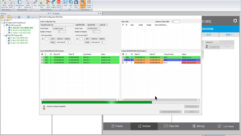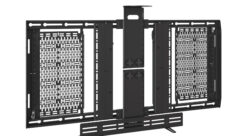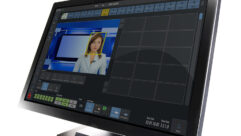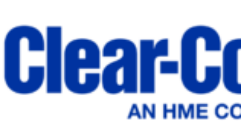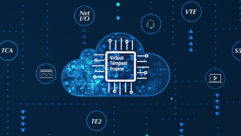
Leading thinkers and doers from around the globe recently gathered in Long Beach, California, for the annual TED Conference. The topical event, which was held February 25-March 1, 2013, was structured around a theme: “The Young. The Wise. The Undiscovered.”
The fast-paced format of 50+ TED Talks and musical performances presented a dizzying array of talent exploring science, business, the arts and global issues facing our world, and introduced attendees to people who are collectively shaping the future. The production was recorded live, simulcast throughout the Long Beach Performing Arts Center and a satellite location in Palm Springs, and also mixed down for broadcast via webcast to a worldwide audience.
McCune Audio/Video/Lighting, one of the oldest and largest rental/sound service companies in the country, has been handling TED’s production since the first Conference was held in 1984. McCune is responsible for cameras, live sound/broadcast mixes, amplification, graphics and video projection, and simulcast.
For the 2013 event, McCune’s Nick Malgieri, with cooperation (and console support) from Hi-Tech Audio’s Louis Adamo and freelance FOH engineer Erik Sandberg, undertook the massive task of retooling the audio footprint to handle the ever-growing demands of the multifaceted conference. The decision to go with an all-DiGiCo/Optocore network offered speed, flexibility and a streamlined infrastructure for the elaborate production. Preproduction alone for the event took nearly a week.
The overall audio system was comprised of two SD10s for FOH, an SD10 for monitors, an SD5 that handled live music mixes for broadcast, an SD8-24 for submixing/distribution, four D racks, and an SD-Rack for all I/O, complemented by an extensive, 12-zone Meyer PA and McCauley wedges.
“The TED Conference is the most technically challenging project that I’ve ever had the privilege to be a part of,” says McCune Project Manager Pete Bender, who has been involved since TED3 back in 1992. “It has become the conference by which all others are measured, and every year they raise the expectations on content and quality. There is such a wide variety of content, and so many different audiences and recording needs that need to be managed, that it requires an extremely flexible audio system. The DiGiCo and Optocore system was an enormous improvement over previous years. The flexibility of the networked DiGiCo consoles, as well as the Stage Tec console in the TV truck, gave us the ability to route submixes and outputs to virtually any location on the stage or in the truck. This streamlined the system and allowed the engineers to respond to every last-minute request that we could possibly throw at them. And we threw them a lot. Additionally, the fiber network contributed to savings in time and manpower on both the install and strike days.”

At FOH, a pair of side-by-side DiGiCo SD10s helmed by Erik Sandberg handled the live audio mix—approximately 200 inputs, including 26 channels of wireless, 24 channels of stereo playback devices (primarily video sources), 48 inputs allotted for guest artists and bands as well as a number of submixes for the other consoles.
One SD10 was set up specifically for the corporate production inputs, while the other managed all the live music inputs. A third monitor SD10 console was housed in a rolling road case and wheeled on and offstage to accommodate six ear mixes and a dozen wedge monitor mixes, as well as backstage monitors and production monitors. At FOH, a D Rack handled all FOH inputs and outboard gear inserts, and an additional two D racks at the A2 position onstage handled production inputs such as wireless mics and outputs to the PA system or monitors. An SD-Rack in video world served all of the I/Os, and a fourth D rack was mounted in the thrust staging to manage on-the-fly presenter and artist inputs, mainly for the musical performers.
“As we started doing rehearsals, I was able to cover all my bases with this setup and jump between the two consoles,” says Sandberg, who has handled TED’s FOH for the past eight years. “I had the console split with mics on the left bank and playback devices on the right – with a show this fast-paced and complex, it’s important to keep the structure of the consoles as simple as possible. On the production console, I pretty much ran it from one snapshot and relied instead on presets for each presenter’s EQ. On the music console, every act had its own snapshot. Often bands will show up [at the conference] with their own engineer, and it made life easier to have a separate console so that they could check PFLs, and check channels before they went on. I had it set up like a typical nightclub system, simple and similar to what they’re all accustomed to: kick, snare, hat, rack, floor, right down the line, effects and delay. We had two foldback lines from FOH but a vast majority of onstage monitoring was done backstage by Nick [Malgieri].”
The show consisted of 26 channels of wireless; the first 12 were DPA 4088 headset mics. “TED is known for using the headset mics,” Sandberg explains, “and it’s become part of the look of the TED Talks. The DPAs worked well for that. We also had a series of handheld mics that floated around the audience for Q&As. Onstage, there were five rolling podiums with audio that presenters could plug into with their laptops, plus there was an incoming feed from Palm Springs via Polycom. A lot of playback originated at FOH and I was able to send that as a console send into the network. This made it really easy for everyone to customize their inputs based on what they needed. In the past when we’ve had analog splits, it’s been a challenge because I’d end up with more inputs at FOH and I’d have to do separate snake runs to all the other consoles so they could get what I was getting. It’s one of the reasons we decided to go with the DiGiCo/Optocore network—and it’s made a big difference. It sounds good and it’s easy to use and flexibility is key. Setup time was a fraction of what it used to be.
“The SD10 is a very easy console to navigate. The surface is extremely intuitive, so I was able to organize the desk the way that made sense to me from where I physically sat; I was able to put anything I wanted anywhere, which was invaluable. I was able to put all headset mics on the left side of the console near the Dugan auto mixers, which I inserted on all the channels for panel discussion or multiple mics. They helped to get a clean, lower noise floor. I used a WAVES server on the production console. The plugin was a WNS Noise Suppressor that I inserted into each of my headset mics. It’s a giant, wooden and very reverberant room; the plugin helped knock down reverb. I relied on those noise suppressors quite a bit and they certainly help with intelligibility.”
Backstage, Malgieri found that the Optocore network allowed his monitor console to be mobile and also cut down the amount of gear needed to do the gig. “All risers, band equipment, scenery, grand piano, and whatever else they decided to put onstage went in and out through there, so real estate was a really big deal on stage left,” he explains. “Not running copper snakes this year was huge, and was another benefit of the DiGiCo consoles because I got rid of three split racks and a rat’s nest of cable. We’ve shrunk the footprint from about 50 feet down to half that, to sharing mic pres, no splitters and a lot of fiber—and I was able to leave six to eight large boxes at our warehouse. Also, we used to have this enormous hod [bundle] of cables, and it was a 12-guy, eight-hour ordeal to pull it through the PVC conduit to FOH… This year, with just the two fiber cables and two guys, we were able to save a lot of labor and man-hours. And because I was able to keep the monitor desks tethered down to a loom, it was easy to roll on and offstage for soundchecks. We only had one-and-a-half hours between sessions and, in that time, we had to rehearse four speakers and soundcheck a band in 20 minutes.”
In addition to mixing wedges and in-ear monitors for all the bands and presenters, Malgieri handled Announce from the truck for monitors onstage and off. “I was like the production switchboard for anything around the stage,” he laughs. “Anyone that showed up and needed a temporary speaker, that was me. The stage Announce output from the trucks’ communication system came in and through some creative sidechain-ducking programming I built a Program Interrupt to the backstage monitors, which were time-aligned to the video monitors but fed from the FOH mix, not the broadcast mix. So when anyone was speaking from the truck it cut the monitoring to all the backstage monitors like a TV studio. The flexibility of the console allowed me to do that. I can’t think of any other console that’d allow me to do that in the same way. Another huge thing was that I was able to program a macro to undo that interrupt function without having to get back into my layers and figure out the complicated routing and processing I did. One button press undid it and I didn’t have to think about it on the fly. I just hit the button as an emergency bailout.”
Situated between the venue and the truck, an SD8-24, run by mixer Matt Chavez, with optics on optical loop, served as a distribution hub, routing to lobbies, tents, the plaza, the loge and the balcony. It also broadcast TED’s Walk-in Music at the beginning of each session, and controlled the announcement system that covered the entire venue.
Inside the mobile truck, an SD5 run by Adamo served as an interface between the venue’s audio consoles and truck, running more than 200 I/Os. All channels from the venue were routed over Optocore into the truck and were tied into the main broadcast console via MADI. Additionally, Adamo mixed the musical acts and sent them to the truck, and multitracked to a 128-channel Pro Tools rig via two MADI streams.
A few of the conference highlights were the Kinshasa Orchestre Symphonique (introduced by Ben Affleck), a choir that consisted of 100 members onstage and many more coming in via 32 live Skype feeds, Amanda Palmer and her punk rock ukulele, and Wang Li, the extraordinary master of the Jew’s harp. “The awesome DiGiCo EQ shined during the Jew’s harp performance,” Sandberg recalls, “as he was going for loud volume, which (surprisingly) really put my subs to work. There were lots of small notches under 80hz! The Optocore network was amazing. Because we used very little copper this year, we never had a problem with strange buzzes and hums that have popped up during install and rehearsals in years past. Also, the ability of all five consoles to grab any and all inputs was invaluable. All in all it was great, and DiGiCo shone as expected.”
“The system worked fantastically,” Malgieri adds. “We had no failures or issues; no hums or buzzes. This year was the easiest TED conference so far, due in large part to the DiGiCo/Optocore system. It was also the fastest load-out in the history of the show… by a lot! Every year TED gets a little bit bigger and they request a new technology or infrastructure. Every year, with new changes, we add more gear to our inventory to keep up with the changes, and it’s grown at just the right pace so that we can keep up. This gig ended up raising the expectations for our other clients because they see the benefits of the new gear and systems we’re adopting and implementing. This is the first time I’ve done more than two consoles on an Optocore network so anytime this scenario ever comes up again, it will become a new standard for a large McCune show.”


